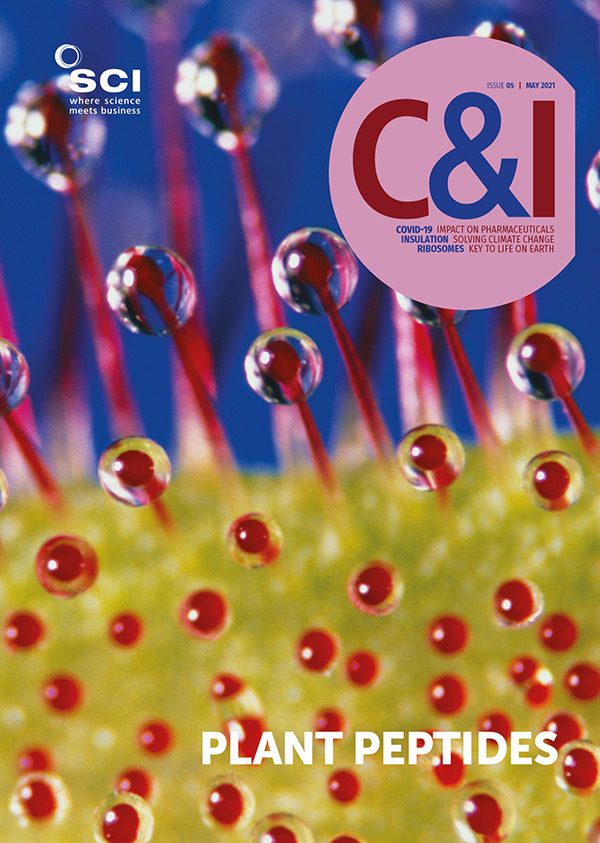Anthony King
The great hope for an Alzheimer’s treatment for 2021 – aducanumab –is a monoclonal antibody from Biogen that removes amyloid beta peptide, a hallmark of disease. There’s been no new approved Alzheimer’s treatment for decades, and the US FDA is set to review aducanumab in June.
But while hopes are high, other antibody therapies for removing plaques failed to show benefits in patients. ‘Treatments targeting plaques have not been successful because they are being used too late,’ says Rudy Tanzi, Director of the genetics and ageing research unit at Massachusetts General Hospital. ‘Amyloid plaques are accumulating two decades before the disease symptoms.’
He compares antibody therapies clearing plaques in advanced Alzheimer’s to giving cholesterol lowering drugs after heart failure. Now, however, researchers from the Salk Institute in California are suggesting that some plaques may play a protective role. ‘The generation of dense-core plaques may be an attempt by the immune system to concentrate [amyloid] beta into a small space,’ says Salk neuroscientist Greg Lamke. ‘If antibodies simply break up those plaques into smaller pieces, then those therapies are not going to succeed, because you’re not really addressing the problem.’
That problem, says Lamke, is that small oligomers of amyloid are the most toxic species. His group’s recent study imaged the immune cells of the brain (microglia) as green, and labelled plaques as red (Nature Immunology, doi: 10.1038/s41590-021-00913-5). Photon microscopy then showed microglia full of red amyloid in live mouse brains. They concluded that microglia swallow small toxic pieces of amyloid and concentrate them as less harmful dense-core plaques.
This function of microglia can be greatly reduced if two receptors of the TAM family are knocked out. ‘We expected to see mice that didn’t have TAM receptors loaded with plaques, but in fact they had fewer plaques,’ Lamke explains. The microglia need TAM receptors to consume loose amyloid pieces and concentrate them into less harmful amyloid plaque. Turning up their TAM activity may boost clearance of plaques.
Tanzi says the Salk group has found an important new system to control microglial clearance of amyloid beta protein, ‘but most of us are trying to figure out ways to get microglial cells to clear amyloid’. He disagrees, however, with any suggestion that the clearance of plaques is anything but positive.
‘The most important thing is to clear the reservoir of oligomeric amyloid beta,’ says Tanzi. He suggests the dense cores are what is left over once the microglial cells have done their main job of clearing the periphery of the toxic soluble plaque. His research has focused on inhibiting a receptor called CD33 on microglia, because knocking down its expression encourages them to phagocytose (eat) plaque. ‘We are working on gene therapy to inactivate CD33, so as to induce microglial clearance of plaques,’ Tanzi explains.
He says it has become clear that neuroinflammation kills at least ten times more neurons than the original plaques and tangles. ‘We know plaques and tangles are an initiating pathology that comes early, and then by killing neurons, this triggers neuroinflammation, which is the main killing pathology that leads to symptoms [of Alzheimer’s],’ says Tanzi.
In Japan, meanwhile, scientists report eliminating clumps of amyloid protein by activating a catalyst with light (Brain, doi: 10.1093/brain/awab058). They injected a photocatalyst into the brains of live mice with Alzheimer’s-like disease and then used a specialised probe to shine light into their brains for 30 minutes each day for one week. This significantly reduced amyloid protein.
‘Though several amyloid-targeting antibodies have been developed, the blood brain barrier penetration efficiency is below 0.1%,’ notes Taisuke Tomita, a neuroscientist at the University of Tokyo. The group recently reported on a catalyst capable of reaching the brain after injection that could solve this problem (Science Advances, doi: 10.1126/sciadv.abc9750).
The new catalyst adds oxygen to destabilise the amyloid plaque, which is then removed by microglia. ‘It is lovely to see this type of science, but from a translational point of view, there’s a lot of pitfalls here,’ says neurobiologist Matt Campbell at Trinity College Dublin. He doubts the strategy could be applied to millions of AD patients, especially if it requires getting light into the human brain.
‘Irradiation in humans is an important issue as the penetration efficacy of the light over the skull is limited,’ Tomita acknowledges, adding that the group is working on a new photocatalyst that can be activated by minimal energy and trying another approach to activate the compound without surgery.
Campbell says the role of microglia is still not clear. ‘There’s a field of view that microglia are driving Alzheimer’s disease through neuroinflammation, and then there is another camp saying – like in this paper – that microglia are protective,’ says Campbell. ‘It’s an evolving area.’ Up-regulation of the TAM receptor, as suggested by the Salk group, could be a potential route to treat AD, by boosting clearance of amyloid by microglia.
Tanzi says inducing microglia clearance of amyloid beta has the upside of getting microglia to turn off pro-inflammatory cytokine release, dialling down destructive neuroinflammation.





